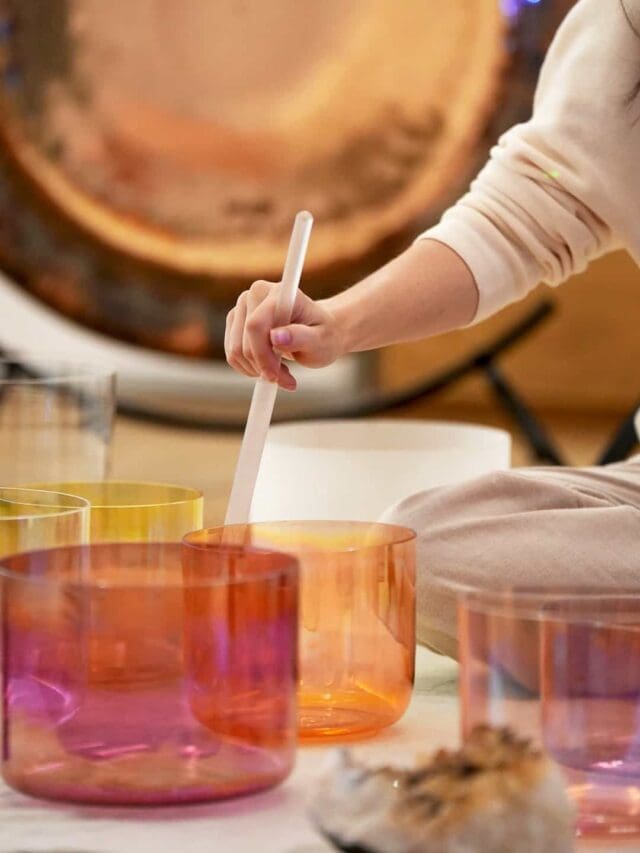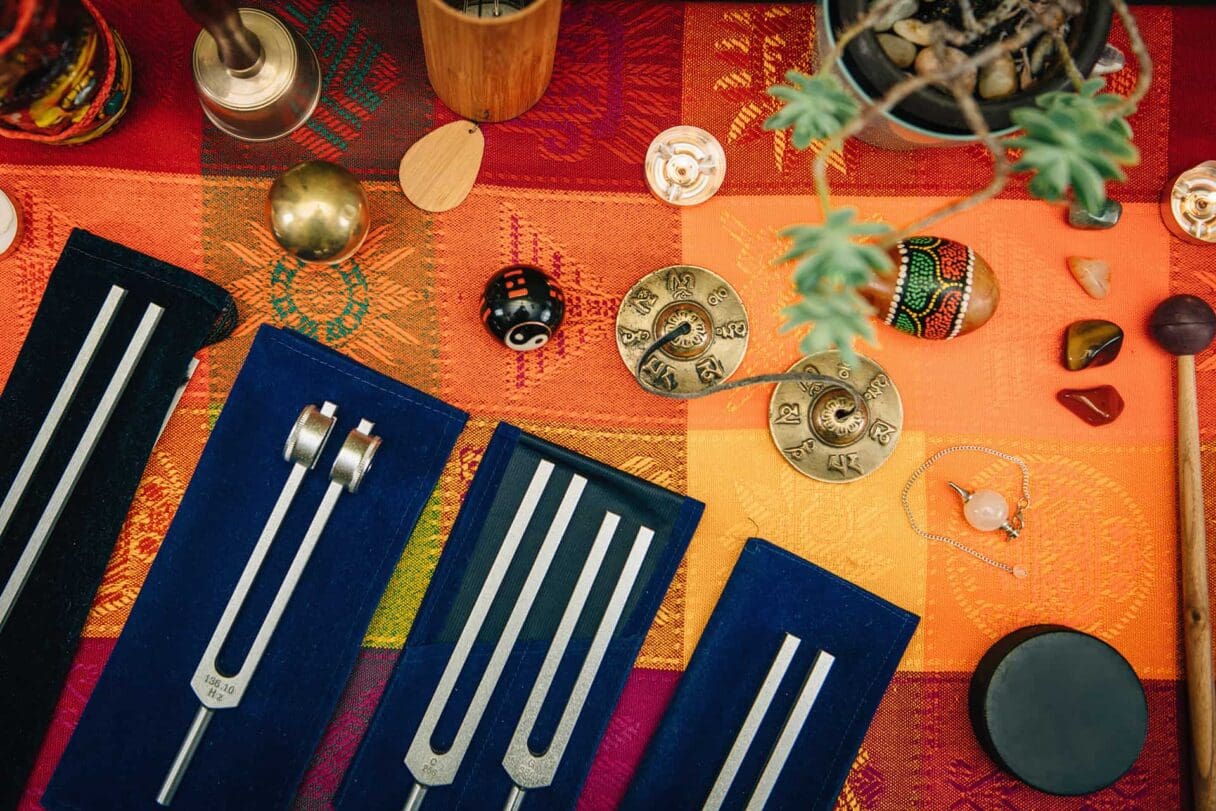
The beginner’s guide to sound bathing
In need of a reset for 2023? Thought to rebalance the body, mind and spirit using sound frequencies, we get the inside track on sound healing
A form of alternative therapy, a sound bath or sound healing uses a variety instruments, themes, and meditations to relax, realign and heal the body, mind, and spirit. Ideal for those with busy, stressful schedules, more and more people are turning to this practice as a method of self-care aimed at tackling a range of issues, from promoting confidence and reconnecting with the body or finding stillness and calm.
So, where to begin? Like most things, it pays to have an expert to turn to and the capital is brimming with practitioners offering workshops and sound healing sessions. Our pick of the bunch is London-based Harriet Emily, a sound healing and meditation practitioner who recently launched a space in Harrods. Her practice combines guided meditation, crystal singing bowls, koshi chimes, breathwork and aromatherapy to bring about a deep state of relaxation as well as empower and re-energise.
Here, Emily gives us her expert guide to sound healing, including how to get started, how to incorporate sound baths into your life and how to make the most of every session.
What is a sound bath?
A sound bath is a form of meditation that uses a combination of unique instruments played in a relaxing, soothing way to encourage peace, stillness and calm throughout the mind and body.


What is the history of sound healing?
The practice of musical therapy began in the 1940s while modern-day sound baths came on the scene in the 1960s. However, some of the instruments used in sound healing date back many thousands of years. The gong, for example, originated circa 3500 BC while the Himalayan bowls were first worked with around 500 BC.
What does a sound healing session involve?
In a typical sound bath, I would first invite you to sit comfortably as you focus on your breath and body, to help you settle into the space. From here, you would be guided to lie down, wrap up in a blanket and get cosy as the meditation begins. I always encourage people to set an intention at the beginning, whether that’s simply to relax, give back to yourself, or focus on a specific area of the body. Having an intention allows you to focus more clearly during the experience; it creates a state of mindfulness and helps you feel a deeper connection to the sounds.
I typically begin with the lower, more grounding tones of the gongs, before moving on to lighter, uplifting sounds from crystal singing bowls and chimes. I carefully curate and play each instrument to induce deeply relaxing states within the body and to provide a variety of different sounds that allow you to experience the many wonderful ways they can make you feel. Once your journey finishes, I will call you back to slowly reawaken the body and gently re-emerge into the present, giving you time to notice how you feel within yourself after the experience.

When is the best time for a sound bath?
It’s something that can be done at any time of day, and whenever or wherever suits you most. Most in-person sound journeys are around 60 minutes long, but if you’re ever short on time or can’t make it in person, you can still find benefit by immersing yourself in recordings of relaxing sounds for just five or 10 minutes. There’s no right or wrong here.
What equipment do I need for sound healing?
At most sound healing sessions, including the ones I run, everything is provided for you: mats, cushions, blankets and a cosy environment. All you need to do is wear comfy clothes you can feel relaxed in while lying down.
What are the benefits of sound healing?
Sound healing gives you the time to go within, detach from the outside world and reconnect with yourself. Many people find they feel more relaxed, peaceful, and rejuvenated afterward, while the different sounds also make them more aware of themselves and their emotions, helping them to navigate real-world situations.






